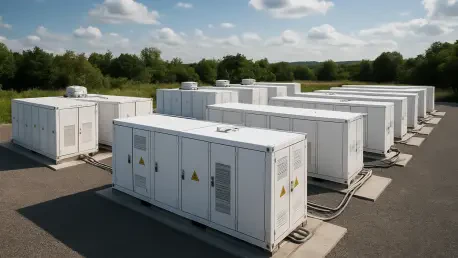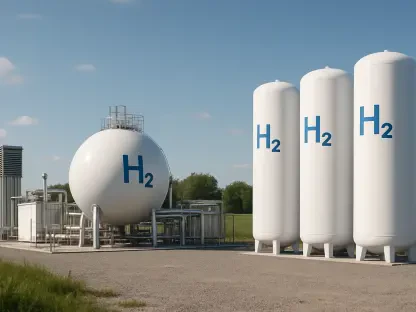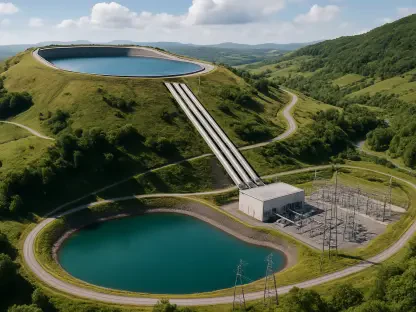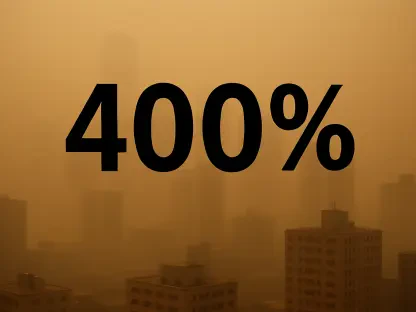The energy landscape in the Mid-Atlantic and Midwest is at a critical juncture, with PJM Interconnection facing mounting pressure to bolster grid reliability amid soaring capacity costs and tight power supplies. As a regional transmission organization overseeing a vast network, PJM lags behind storage leaders like California and Texas, creating urgency for innovative solutions. This roundup gathers diverse opinions, tips, and reviews from industry stakeholders, policymakers, and financial experts to explore how recent reforms, projects, and state initiatives are shaping PJM’s path toward a stronger energy storage presence. The goal is to provide a comprehensive view of the opportunities and challenges ahead, shedding light on what’s driving this pivotal shift.
Unpacking the Storage Challenge: Diverse Views on PJM’s Landscape
Industry analysts frequently highlight PJM’s struggle with limited energy storage capacity as a significant barrier to grid stability. Compared to regions with robust storage systems, PJM’s current infrastructure falls short, prompting concern among grid operators about managing peak demand and integrating renewables. Many experts point out that without substantial investment in storage, the region risks persistent price volatility and reliability issues, especially as energy demands grow with sectors like data centers.
On the flip side, some market observers see this lag as an opportunity for rapid transformation. They argue that PJM’s position allows for learning from other regions’ successes and adopting best practices in storage deployment. Clean energy advocates emphasize that storage isn’t just a technical fix but a cost-saving measure, potentially easing the burden of high capacity auction prices that have frustrated state leaders and utilities alike.
A recurring theme among stakeholders is the need for a cultural shift in how storage is prioritized. While traditional energy sources have long dominated planning, there’s growing agreement that battery systems must become central to PJM’s strategy. This perspective is often coupled with calls for education and awareness to ensure all parties, from regulators to local communities, understand the long-term benefits of such investments.
Diving into Solutions: Reforms, Projects, and Policies in Focus
Bridging Gaps with Interconnection Reforms: What Experts Say
Recent FERC-approved surplus interconnection reforms have sparked optimism among clean energy groups, who see these changes as a game-changer for unlocking underused capacity at existing plants. Trade organizations estimate this could pave the way for significant new storage resources, addressing historical bottlenecks caused by restrictive rules. Many in the sector view this as a critical step toward aligning PJM with more storage-friendly regions.
However, not all feedback is unanimously positive. Some state officials express skepticism about whether these reforms can fully tackle the underlying market pressures driving high costs. They argue that while the policy shift is promising, implementation challenges and political pushback could slow progress, leaving questions about how quickly benefits will materialize for ratepayers.
Financial analysts add another layer to the discussion, noting that reforms must be paired with incentives to attract private investment. Their perspective centers on the need for clear market signals to ensure developers feel confident in funding storage projects. Without such stability, they warn, even the best regulatory changes risk falling short of their potential impact.
New Projects Sparking Momentum: Industry Reactions
Tangible progress in PJM’s storage landscape, such as Patterson Enterprises’ two 10-MW battery initiatives in Virginia backed by substantial funding, has drawn praise from project developers. These efforts are often cited as scalable models that could inspire similar ventures across the region. Supporters highlight how such projects address immediate energy needs while demonstrating the viability of storage as a mainstream solution.
Grid planners offer a more cautious take, focusing on PJM’s fast-track interconnection reviews that include a notable portion of storage among selected projects. While they acknowledge the near-term potential of these developments, they stress that the scale of need—projected to reach massive levels by the decade’s end—requires a much faster pace. Execution risks, including supply chain delays, remain a frequent concern in their assessments.
Renewable energy proponents, meanwhile, see these projects as a stepping stone to broader systemic change. Their input often emphasizes how each new battery system reduces reliance on outdated, inefficient plants, pushing for policies that accelerate deployment. They advocate for public-private partnerships to ensure that momentum doesn’t stall due to funding or logistical hurdles.
State-Level Ambitions: Varied Approaches Across PJM’s Footprint
State policymakers in PJM’s territory, such as those in Virginia targeting significant storage capacity by 2035, are often lauded for their proactive goals. Their legislative efforts and project approvals signal a strong commitment to energy storage, even when faced with setbacks like vetoed target increases. Many local leaders believe these ambitions set a powerful precedent for regional cooperation.
Contrastingly, states like New Jersey, with auction-based procurement plans, receive mixed reviews. Some energy consultants commend the competitive approach for driving innovation and securing capacity, while others caution that fragmented state strategies might not align with PJM’s overarching grid needs. This divergence in opinion underscores a broader debate on how to balance local priorities with regional coherence.
Environmental groups weigh in with a critical lens, questioning whether state targets are ambitious enough to close PJM’s storage gap. They often push for more aggressive timelines and standardized policies, arguing that without unified action, the region risks falling behind national clean energy trends. Their perspective adds urgency to the conversation, urging states to think beyond individual goals.
Grid Reliability and Storage: A Cornerstone According to Stakeholders
There’s a strong consensus among grid operators and energy experts that storage has evolved from an optional add-on to an essential component of PJM’s reliability framework. They frequently cite its role in managing capacity shortages and stabilizing prices, especially during peak demand periods. This view is widely shared as a fundamental shift in how the region approaches energy planning.
Financial backers and clean energy financiers bring a practical angle, often describing storage as a cleaner, more efficient alternative to traditional peaker plants. Their insights focus on the economic advantages, suggesting that well-placed battery systems could reduce long-term costs for utilities and consumers. This perspective often includes recommendations for market mechanisms that reward such investments.
Some technology advocates take a forward-looking stance, speculating on how storage could redefine PJM’s market dynamics if scaled effectively. They envision a future where integrated battery systems not only ease political tensions over costs but also support a more sustainable energy mix. Their input often calls for pilot programs to test innovative storage solutions on a wider scale.
Key Takeaways and Practical Tips from the Roundup
Synthesizing the varied insights, it’s clear that interconnection reforms, emerging projects in areas like Virginia, and state-driven policies are pivotal to PJM’s storage growth. Industry voices consistently point to the importance of fast-tracking viable projects as a near-term priority. Tips from grid experts include streamlining approval processes to minimize delays and ensure timely deployment.
State and regional alignment emerges as another critical focus, with many stakeholders advocating for collaborative frameworks to harmonize local targets with PJM’s broader needs. Practical advice often centers on creating forums for dialogue between state officials and grid planners to address discrepancies in approach. This step is seen as vital for building a cohesive storage strategy.
For those looking to engage more deeply, monitoring PJM’s capacity auctions provides a window into market trends and storage impacts. Additionally, supporting policies that incentivize private investment in battery technologies is frequently recommended by financial experts. Their guidance underscores the role of community and industry advocacy in pushing for accelerated storage adoption across the region.
Reflecting on PJM’s Storage Journey: Next Steps and Considerations
Looking back, the discourse around PJM’s energy storage expansion reveals a dynamic interplay of optimism and caution among stakeholders. The collective insights point to significant strides through regulatory reforms and state initiatives, yet also highlight persistent challenges in scaling solutions to meet long-term demands. Each perspective adds depth to understanding how PJM navigates this complex terrain.
Moving forward, a key consideration lies in fostering stronger public-private partnerships to bridge funding gaps and mitigate execution risks. Exploring innovative financing models could unlock additional resources, ensuring that projects don’t stall midstream. This approach offers a pathway to sustain momentum and address capacity shortfalls more effectively.
Another actionable step involves investing in research for advanced battery technologies tailored to PJM’s unique grid needs. Encouraging pilot initiatives to test these innovations could yield valuable data, informing future deployments. By focusing on such strategies, PJM and its stakeholders can build a more resilient energy future, tackling both immediate pressures and looming sustainability goals with confidence.









